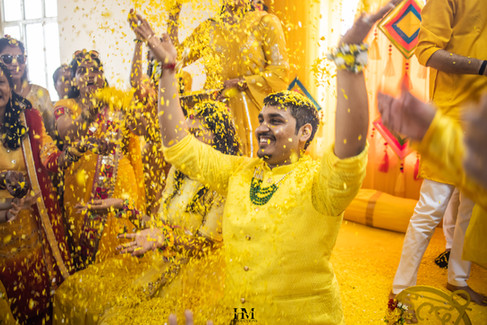The types of wedding photography and videography
- Hitesh Malpani

- Oct 12, 2023
- 3 min read
Updated: Apr 12, 2024
Wedding photography and videography has evolved dynamically in the last few decades. It includes a variety of photography and videography types.

Weddings are a great mix of color, romance, fun and the promise of an ever-after. A wedding is a big day for every couple. They reminisce about the moments of their fairy tale wedding with their wedding pictures and videos. Thinking about the wonderful times brings joy even after years have passed.
You need a team of professional wedding photographers and videographers to capture your special day, but this search can be daunting. Every photographer has a distinctive style and brings a unique perspective to the wedding. It is essential to select a photographer whose photography and videography style appeals to you and matches your requirements.
• Traditional wedding photography focuses on taking posed shots of the couple, family, and guests. A traditional wedding photographer provides direction to the couple and the guests to pose in a certain manner. This conventional timeless classic type has been popular for ages as it stands the test of time. The images are simple and include all the essential shots. Most photographers incorporate some traditional photography elements into their photographs.
• Traditional Wedding Videography, pictures tell a story, but videos can create magic and instantly instill emotions. In traditional videography, the videographer covers all the major functions of the wedding. Every aspect of the wedding is carefully shot to create timeless memories of your big day. This traditional setup often covers all the rituals, sangeet, reception, band, baaja, venue, décor, and a lot more. All the important and aesthetic shots are then combined and transformed into full wedding films.
• Candid wedding photography has become one of the most sought-after types of wedding photography in India. It captures natural poses and honest facial expressions in the spur of the moment. The shots are spontaneous, documenting the most heartfelt emotions like laughter, tears, happiness, and surprise. The shots give the vibe of a ‘hidden camera’ as the shots are not posed or directed. This creates magic and leads to the most memorable photographs. In this type of photography, the wedding photographer is constantly on the move and lets the moments unfold in their natural space. A candid wedding photographer plays with angles, light and a sense of direction to capture the emotions in their most raw form.
• Cinematic Videography is an art form intertwined with creative storytelling. It captures the unposed and candid moments during the wedding. It focuses on the tiniest details. It often uses drone shots to give the cinematic effect and capture aerial shots of wedding venue. A cinematic wedding filmmaker is adept at capturing every crucial moment with a unique perspective and a creative angle. They have the innate potential to weave a magical story with all the captured moments. Cinematic videos are a visual treat as they summarize the essence of your wedding events in a short film. Cinematic wedding videos cover all the essential moments. With brilliant sound effects, a suitable background score and skillful editing, these moments stir a potpourri of emotions as you watch it.
HM Productions by Hitesh Malpani has covered weddings across India with a team of highly skilled candid wedding photographers and cinematic videographers from Jaipur, Rajasthan. HM Productions is known for freezing unforgettable moments and capturing memories for a lifetime through their photojournalistic and editorial style of wedding photography. Hitesh Malpani has gained recognition as a destination wedding photographer and filmmaker in India. Being a wedding photographer in India, operating from Delhi and Jaipur, he brings a royal touch as he covers each wedding. Hitesh and his team consult the couple to understand their expectations and assists them in choosing the type that best resonates with the couple’s personality.
So, which type of wedding photography and videography will you choose for your ‘happily ever after’?
















This is a fantastic breakdown of the different styles. The shift towards candid and cinematic storytelling is so powerful for capturing genuine emotion. A practical tip for couples: if you're collecting video clips from older family archives to include in a montage, you might need to convert WMV to MP4 to ensure all the files are compatible and easy to edit together seamlessly. Great overview of the options!